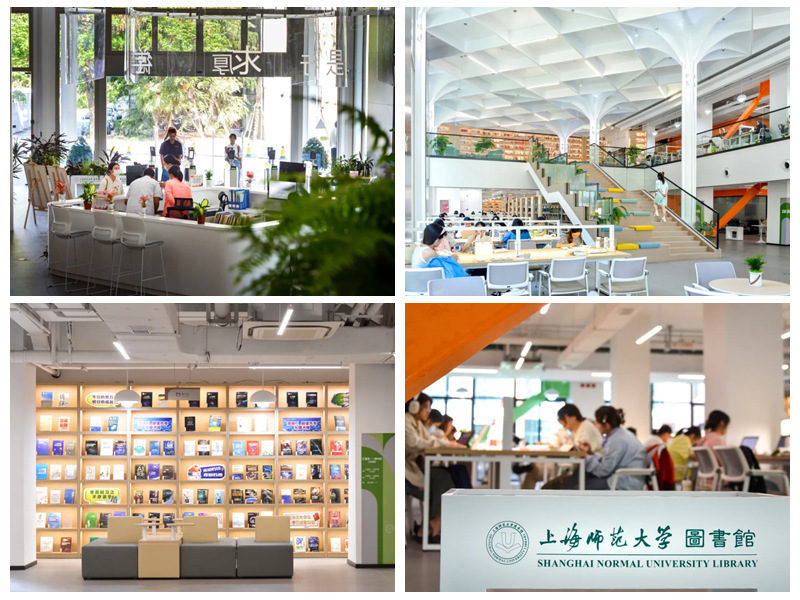On the occasion of the upcoming 70th anniversary of the school’s establishment, the Main Library of Shanghai Normal University at Xuhui Campus has returned with a new look. On September 23rd, Lin Zaiyong, Secretary of the Party Committee of the university, Yuan Wen, SHNU President, Jiang Mingjun, SHNU Vice President, as well as the heads of sister university libraries such as the Shanghai Jiao Tong University Library, East China University of Political Science and Law Library, and Shanghai International Studies University Library, relevant departments and college heads of the university, library staff, and student representatives, witnessed this grand moment together. The ceremony was presided over by the library director Jia Tiefei.
Yuan Wen delivered a speech on behalf of the SHNU. She pointed out that the reopening of the library with a brand-new look not only represents a substantial step forward for the school in improving the school conditions and perfecting the infrastructure construction, but also indicates the prosperous and vibrant development of the university. She hoped that the library would take this opportunity of renovation and restart to carry forward its glorious traditions, strengthen its advantages and characteristics, and make new contributions to the construction of a high-level university with distinctive characteristics of teacher education.
The Main Library of Shanghai Normal University at Xuhui was built in the 1980s. Along the way, it has witnessed and participated in the vigorous development of SHNU and has accompanied generation after generation of the students there. In the golden autumn of September, the library has taken on a new look, welcoming learners with a more beautiful attitude. The streamlined extension of the steel beam ceiling in the hall creates the image of an intelligent forest, which not only symbolizes the library as the palace of knowledge, but also echoes the sycamore avenue on the campus. The redesigning of functional areas highlights reading and discussion spaces, providing readers with a more comfortable and convenient reading and learning environment.




